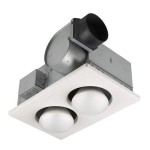Ceiling Has No Light Fixture: Essential Aspects to Consider
When it comes to illuminating your home, ceiling light fixtures play a pivotal role in providing ample and evenly distributed light throughout the space. However, there are instances when a ceiling may be devoid of a light fixture, leaving you with a dimly lit or unsightly area.
Addressing the absence of a ceiling light fixture requires careful planning and consideration. Here are some essential aspects to keep in mind when tackling this issue:
1. Determine the Reasons:
Understanding the reasons behind the lack of a light fixture is crucial. It could be due to structural limitations, electrical issues, or simply a design choice by the previous owner. Identifying the root cause will help guide your next steps.
2. Assess Electrical Wiring:
Before installing a new light fixture, it is imperative to assess the electrical wiring in the ceiling. Ensure that there is an adequate power supply and check for any potential electrical hazards. Consider consulting a licensed electrician if you lack the necessary expertise.
3. Choose the Right Fixture:
Selecting the appropriate light fixture for your ceiling depends on several factors, including the size of the room, the desired level of illumination, and the overall design aesthetic. Consider recessed lighting, flush mount fixtures, or pendant lights to suit your needs.
4. Consider Mounting Options:
The mounting options for your light fixture will depend on the type of ceiling you have. Drywall ceilings provide ample flexibility, while concrete ceilings may require specialized installation techniques. Explore surface mount, recessed mount, or track lighting options to accommodate your ceiling requirements.
5. Plan for Switches and Dimmers:
To control your ceiling light fixture, you need to consider the placement of switches and dimmers. Determine the desired switch location for ease of access and functionality. Dimmers allow you to adjust the light intensity, creating different ambiances.
6. Ensure Proper Ventilation:
Certain types of light fixtures, such as recessed downlights, generate heat. It is essential to ensure proper ventilation in the ceiling to prevent overheating and potential fire hazards. Consider using fixtures with built-in ventilation or installing additional vents in the ceiling.
7. Safety First:
Electrical work involving ceiling light fixtures should always be performed by a qualified electrician. Follow all safety guidelines, turn off the power to the affected circuit before starting any work, and wear appropriate protective gear.
Conclusion:
Addressing the absence of a ceiling light fixture requires a comprehensive approach, considering factors such as electrical wiring, fixture selection, mounting options, switch placement, ventilation, and safety. By carefully planning and implementing these aspects, you can illuminate your space effectively and enhance its overall ambiance.

Awesome Lighting Ideas For Rooms Without Ceiling Lights Doğtaş

Creative Ideas For Lighting Rooms Without Ceiling Lights Lightlady Studio

Awesome Lighting Ideas For Rooms Without Ceiling Lights Doğtaş

Discovered A Handyman Special Light Fixture With No Electrical Box How To Correct R Electricians

9 Lighting Ideas For Rooms Without Ceiling Lights Blisslights

Off Center Ceiling Light Solution Thistlewood Farm

Awesome Lighting Ideas For Rooms Without Ceiling Lights Doğtaş

Off Center Ceiling Light Solution Thistlewood Farm

15 Clever Lighting Ideas For Low Ceilings 2024 Our Picks

6 Types Of Lighting For Drop Ceilings And What S Best Your Home
Related Posts








